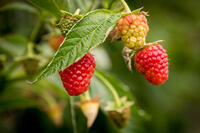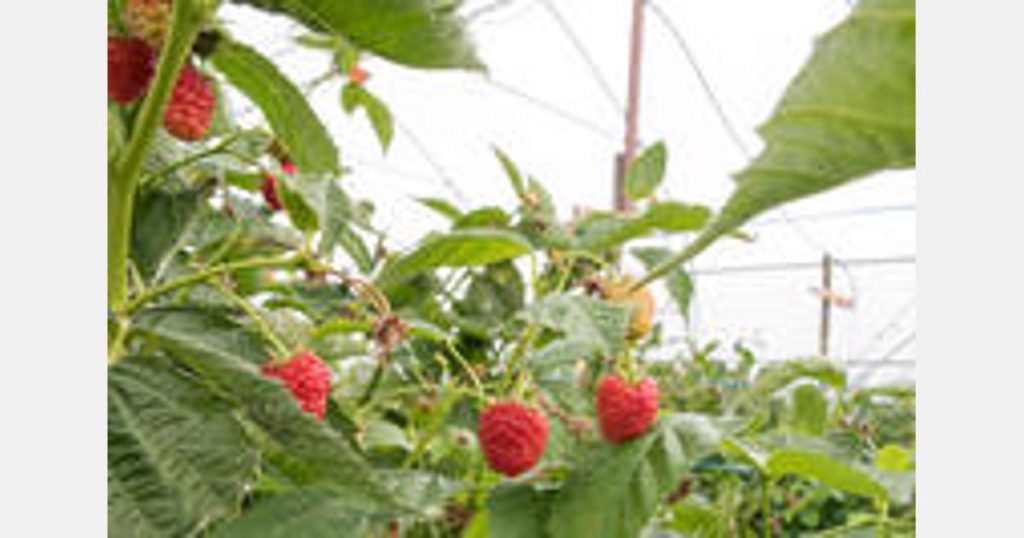Chamber of Agriculture: Crops independent of weather conditions enable consistent quality – open field harvest expected from mid-July onwards
 Oldenburg/Vechta – The first Lower Saxony raspberries of the year are ready for harvesting, according to the Lower Saxony Chamber of Agriculture (LWK). They grow protected in greenhouses and under foil tunnels and therefore have a few weeks head start on the raspberry plants that farms cultivate in the open air.
Oldenburg/Vechta – The first Lower Saxony raspberries of the year are ready for harvesting, according to the Lower Saxony Chamber of Agriculture (LWK). They grow protected in greenhouses and under foil tunnels and therefore have a few weeks head start on the raspberry plants that farms cultivate in the open air.
“The main harvest in the tunnels starts in the first weeks of this month and will last about five to six weeks – in the open field, the harvest is expected to start in mid-July,” reported Felix Koschnick, head of the LWK’s Berry Fruit Experiment Station in Vechta-Langförden, on Wednesday (June 2). “Due to novel cultivation methods, raspberries can now be harvested from May into September.”
“Thanks to the vigorous conditions, the current weather suggests that fruit quality will be very good,” added Albert Nordmann, berry fruit advisor at the Esteburg fruit growing trial ring at the Vechta-Langförden site. “The late frosts that have occurred repeatedly in recent weeks have resulted in only minor damage, as raspberry flowering had not yet begun in the open.”
In recent years, the cultivation of raspberries has noticeably shifted from the open field to protected cultivation: “This allows us to continuously offer consistent quantities and qualities for the food trade, regardless of weather conditions,” Koschnick said.
Although the production of raspberries in protected cultivation is significantly more cost-intensive than in the open field, it has the advantage that fewer pests attach themselves to the plants in foil tunnels and greenhouses and thus the amount of pesticides used can be reduced, the research station manager explained. “Open field plants are now used to a large extent as self-picking facilities,” berry fruit consultant Nordmann reported.
The centers of raspberry cultivation in Lower Saxony are in the Vechta district around Langförden and on the Stader Geest south of the Alte Land. Self-picking facilities are scattered throughout northern Germany, increasingly in the catchment area of larger cities. In order to harvest raspberries as fresh as possible with their own hands, some consumers accept longer journeys.
The growers are concerned about whether raspberry prices will remain too low for Germany due to raspberry imports from Spain, Morocco and Portugal.
According to the State Statistics Office, 53 farms in Lower Saxony harvested a total of 1,266 tons of raspberries last year (2019: 65 farms, 1,046 tons), including 280 tons of raspberries in the open and – in 22 farms – 986 tons of raspberries in foil tunnels and greenhouses (protected cultivation).
Photos: Wolfgang Ehrecke


